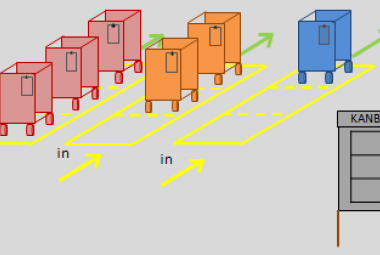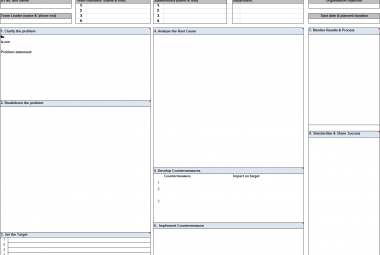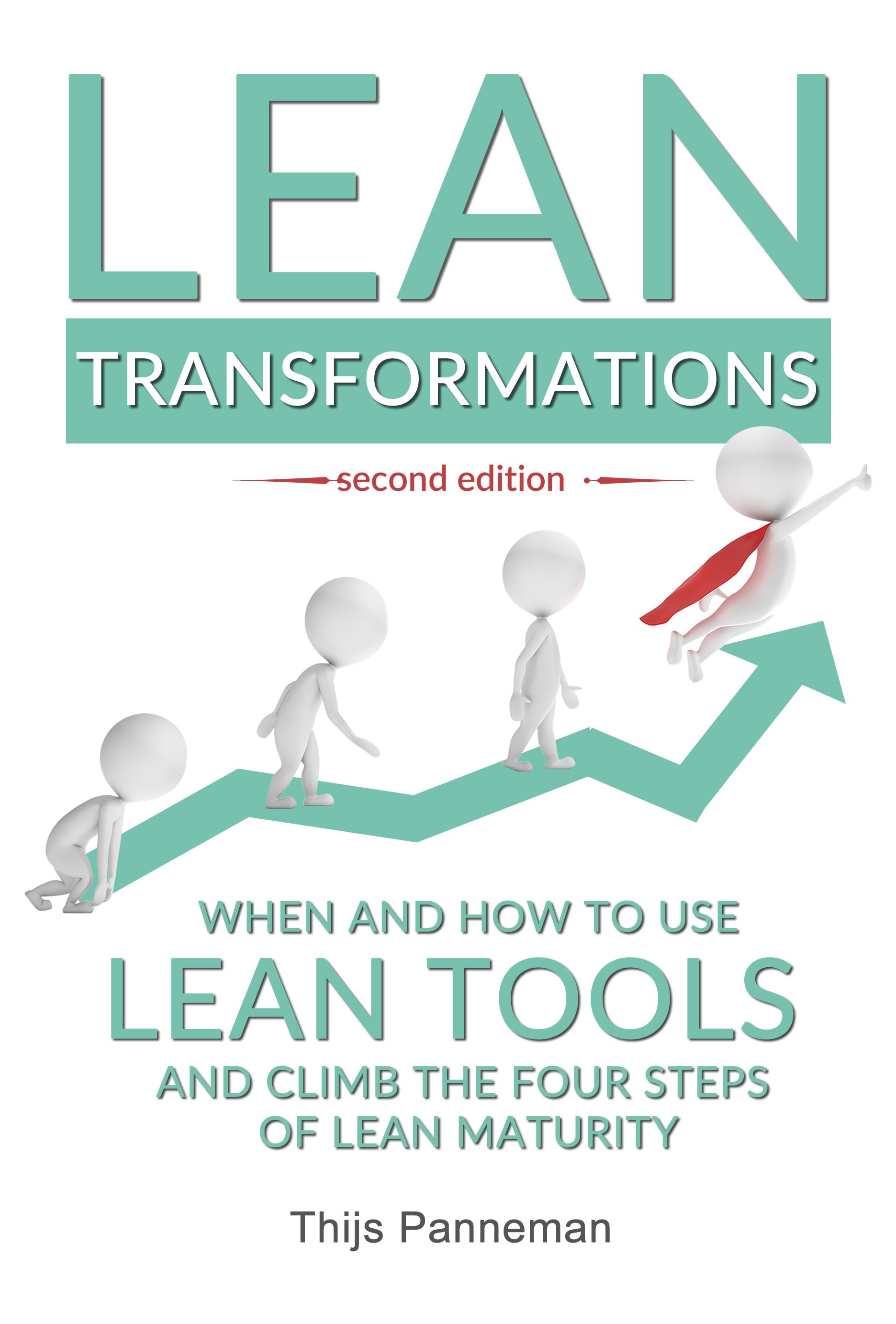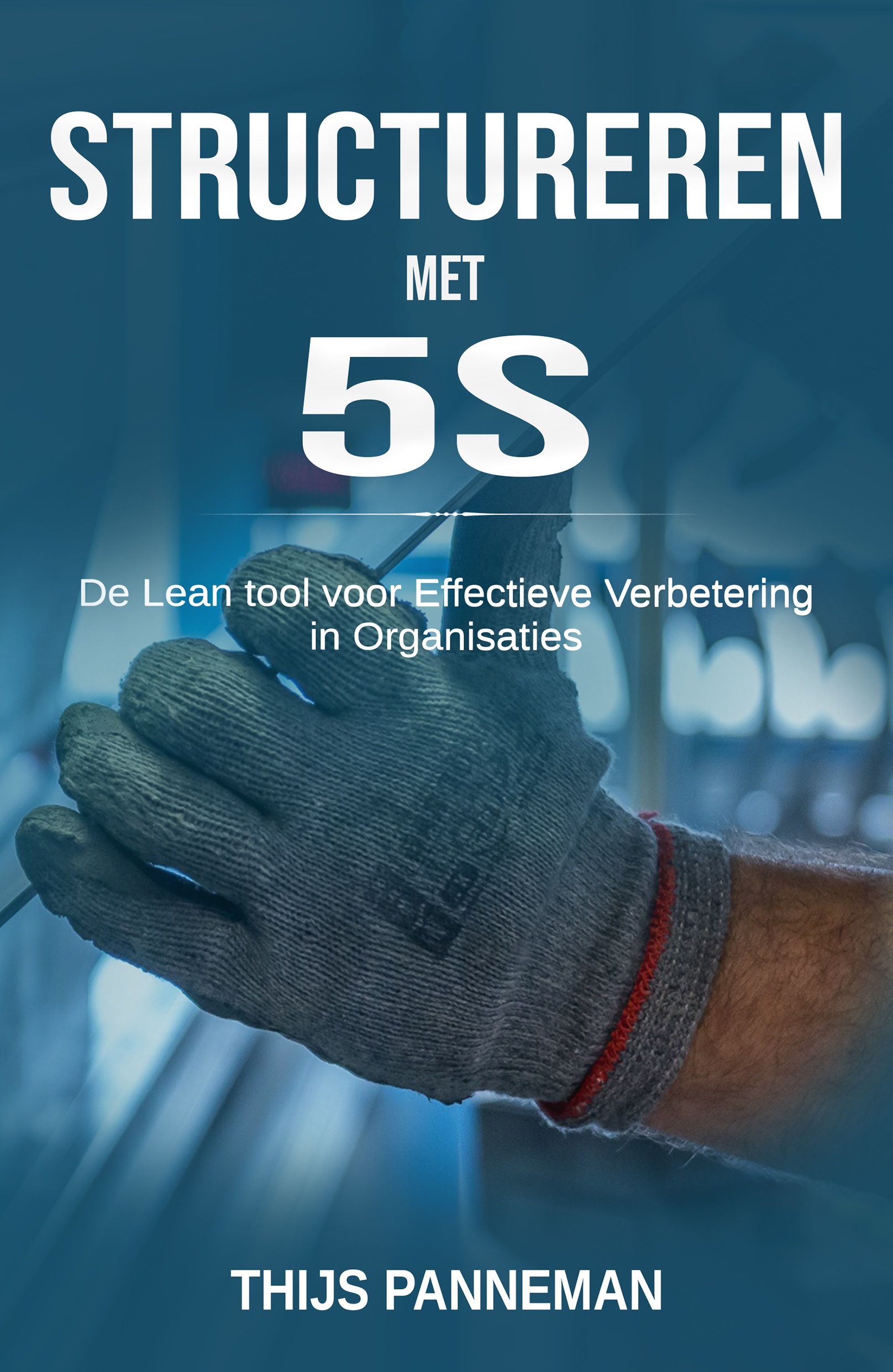Single Minute Exchange of Dies (SMED) is a tool developed by Shingo to reduce change over times on machines. Using this technique, you can reduce set-up times from 4 hours to 3 minutes, which is almost 99% (Shingo, 1985). This article explains the benefit of SMED, the techniques Shingo describes for implementation, 4 steps of the SMED Kaizen event and 3 other tips.
One example in everyday life that explains the benefits of SMED, is changing a tire of our car. In our personal life, we sometimes get a flat tire while we are on the road. Without preparation or proper training, we start looking for the tools we need to change the tire and when we have a spare tire with us, we might be able to change the tire within an hour (that is, if we do not have to wait for somebody else to help us).
Now, let´s think about the formula one industry and how they have professionalized their changeovers in their pit stops. With a team of people, they manage to change all the tires of a car and much more activities on the vehicle within a few seconds!
SMED is all about removing those wasteful steps in the changeover process that will enable you to turn your production process changeovers from being the roadside tire change to the formula one changeovers.
So how can you analyze and reduce your set up time? Shingo described the following 8 TECHNIQUES (Shingo, 1985).
Differentiating between activities that are done while the machine is running (these are called the external activities), and those who are done while the machine is switched off (the internal activities), in which precious running time is lost.
Transfer internal into external activities as much as possible, so that the machine has less off time.
Standardize the different steps of the changeover, by creating standard work to make sure everybody does the step in the same efficient manner. Think about a standard sequence of steps and a standard tool set to use for all change overs.
Modify machines in such a way, that change overs can be done faster. Examples are reducing the length of screws, which reduces the time it takes to loosen and fasten them.
Introduce aids to prevent having to perform a certain activity in the internal category. In this case, external activities are added to prevent internal activities.
Introduce parallel activities to reduce the time that the machine is not producing output. Sometimes it is possible that multiple operators perform change over activities in parallel.
Remove material adjustment tasks from the changeover process by using measurement tools that remove ´intuition´ from the equation.
Last but not least, you could automate the changeover, to remove all human activity and delays from the changeover process.
In a production environment, the length of changeovers influence all three enemies of lean, which explains why it is important to reduce them.
Changeovers can lead to mura, because the workload of people changes when there are set-ups, especially when the changeovers are done by an external team of people and based on the heijunka schedule in which product quantities vary per interval.
Changeovers also lead to muri, when they need a long time to complete and there are more machines that might need changeovers.
Finally, changeovers lead to muda, when products or people need to wait for the setup of a machine for a different product. Changeovers can lead to defects or a waste of material, when actual material is used during the setting process. Finally, the longer the changeover, the larger the production batches are to be able to produce economically. These batches lead to an increase of inventory on both side of the machine.
SMED is usually implemented in the form of a kaizen event, in which whole teams of people that perform the changeovers map and analyze the changeover process.
To structure the kaizen event, Shingo defined FOUR STEPS OF IMPLEMENTING SMED (Nicholas, 1998).
Identify internal and external steps. The internal steps are the tasks that can only be done while the operation has stopped. External tasks can be done during production. All preparation activities like collecting tools are external activities and should not be done while the machine is shut down.
The best way to perform such an activity is observing the changeover real time, or filming it when it is not done every day. In this analysis step, you might also encounter activities that are not required any more, and can be removed from the process immediately.
Concert internal steps to external steps. It is not uncommon that the internal activities can be brought back with 50% at this step (Nicholas, 1998), reducing the time the machine does not run with 50%!
Another strategy is to break up the one big internal task into smaller task. Usually, part of the small tasks can become external tasks or even removed after improvement (Floyd, 2010).
Modify machines to increase the speed in which activities can be performed. The previous steps reduce wastes in the process, but not enough to reduce change overs to less than 10 minutes.
Usually, it helps to simplify the machine by changing nuts and bolts into shorter ones (to reduce the time needed to loosen and fasten them) and standardize them (all done with the same tool). The goal is to make the change over simple enough so that operators can do them themselves (Nicholas, 1998)
Reduce the need for the set up in overall. The only thing better than a shorter change over time is not having to change over at all. This can be achieved by creating dedicated machines for value streams which reduces the number of change overs for that machine and by implementing the heijunka schedule in which the sequence is always the same.
Finally changing the product design would be a good way of reducing the number of different parts produced.
THREE TIPS for reducing change over time: using the yamazumi to visualize work cycles, improving team work and proper preparation.
The yamazumi chart can be used to visualize the changeover tasks. Put all activities that are done in a big stack chart and use color coding to visualize which steps are non value adding, which are external and which are internal.
Improve team work. Use the benefits of team work to get the job done faster. Train a team with a clear division of roles (standards) who can perform their tasks in parallel. Make sure you take personnel needs like coffee and lunch breaks in account when planning a change over. It is not uncommon for a machine to be shut down for 15 minutes extra because people are on coffee break (Floyd, 2010).
Prepare change overs well with a planning and standard work to cover all activities that need to be done. A special tool kit with all the materials and tools needed to perform the set-up also helps reducing the preparation time.
In any situation where we produce in large batches because we cannot afford to have more change overs, SMED is the tool to use. By reducing the changeover times, we can reduce the batch size of the machine and thereby reducing the inventories on both sides of the machine. This leads to a reduction of lead time, the one KPI, used to measure the flow of the process.
Continue to:
REFERENCES:
Floyd, R. C. (2010). Liquid Lean: Developing Lean Culture in the Process Industries. New York: Productivity Press. (order this book)
Nicholas, J. M. (1998). Competitive Manufacturing Management. Boston: McGraw-Hill. (order this book)
Shingo, S. (1985). A Revolution in Manufacturing: The SMED System. Cambridge: Productivity Press. (order this book)














